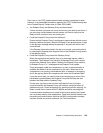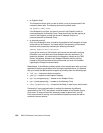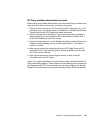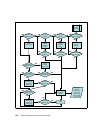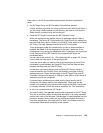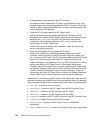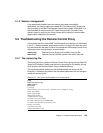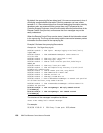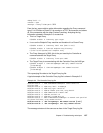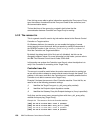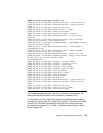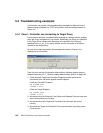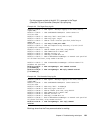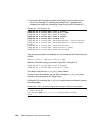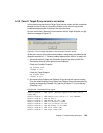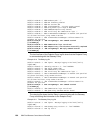
Chapter 5. Troubleshooting techniques 157
<debug-level> = 0
<thread> = 2104
<message> =
Proxy listen port: 5020
From the log, we are able to gather information regarding the Proxy name and
type, if it is a Child or a Parent, if it is running on a TFST environment and, above
all, if the connection with the other Proxies is working. Analyzing the log
information showed in Example 5-2, we see that:
This is a Target Proxy.
03/02/06 15:59:01 0 2104 Proxy type: target
It runs on the Endpoint Proxy machine and therefore it is a Parent Proxy.
03/02/06 15:59:01 0 2104 Proxy label: none (node is root)
03/02/06 15:59:01 0 2104 TFST Endpoint Proxy directory:
C:\Tivoli\TivoliSystems\Tivoli Endpoint Proxy
The Proxy listen port is 5020, this is the port used by the Controller to
communicate with the Target Proxy.
03/02/06 15:59:01 0 2104 Proxy listen port: 5020
The Target Proxy is communicating with the Controller Proxy tic01005-gw.
03/02/06 15:59:02 3 1344 routingManager: WHO reply command received
[l=tic01005-gw]
03/02/06 16:00:55 3 1344 routingManager: TELL command received
[l=tic01005-gw]
This rcproxy.log file refers to the Target Proxy log file.
A typical example of the Controller Proxy log file is shown in Example 5-3.
Example 5-3 The Controller Proxy log file
03/02/04 15:53:37 1 1000 sendCommandLineRequest: cannot connect to
127.0.0.1:3333
03/02/04 15:53:37 0 1000 Proxy label: tic01005-gw
03/02/04 15:53:37 0 1000 Proxy type: controller
03/02/04 15:53:37 2 1000 No timeout specified, using default
03/02/04 15:53:37 0 1000 Communication timeout: 240
03/02/04 15:53:37 0 1000 Max sessions: 10
03/02/04 15:53:37 0 1000 Reply to RSM data: no
03/02/04 15:53:37 3 1000 initRoutedSessionsManager: no network card specified
for parent-local-host, using random interface
03/02/04 15:53:39 3 892 routingManager: WHO command received [l=null]
03/02/04 15:53:39 3 892 routingManager: TELL reply command received
The message structure is the same as we have in the Target Proxy log file.



